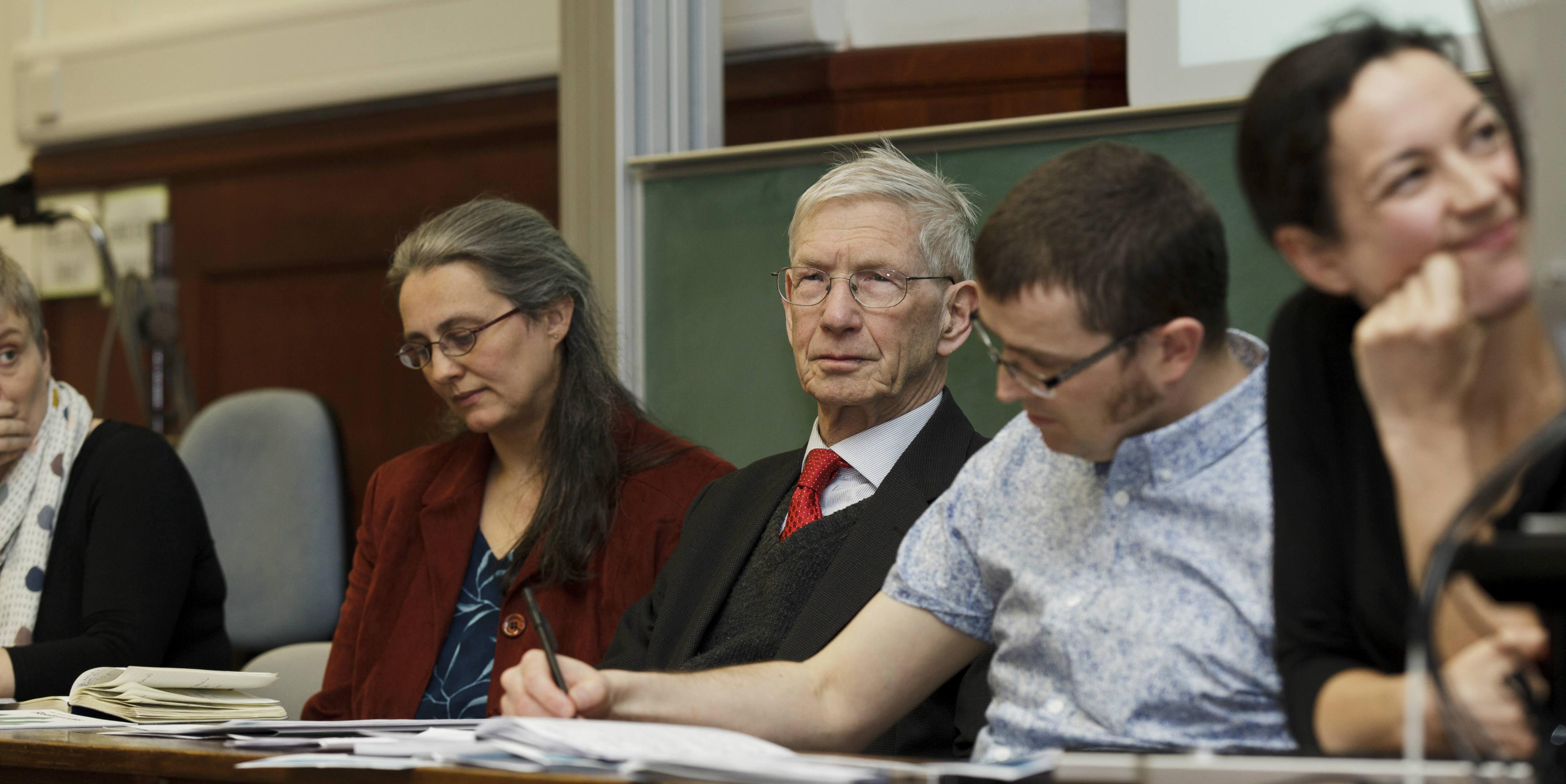
Over 120 people joined two panels of experts in the 18th March to explore how new connections will help to shape cities in the future and visions of Cambridge in 2065 as part of the 2015 Science Festival.
The event was co-hosted by the Forum, Cambridge Centre for Science and Policy (CSaP) and the Energy@Cambridge Initiative and took place in one of the Mill Lane lecture theatres in the centre of Cambridge.
We focused on ‘Connectivity and flows in future cities’ and the evening was divided into two sessions. During the first half of the evening, four speakers talked about their vision for a sustainable city and how increased connectivity and the flow of resources, people and energy could help to shape cities in the future. This was followed by a second panel of speakers who discussed visions of a future Cambridge.
Joining the dots in future cities
Paul Linden, the Director of the Forum and G.I. Taylor Professor of Fluid Mechanics, chaired a discussion between four experts who each outlined how they think that new connections will help to shape future cities, including where people live, how they live their lives and how they respond to challenges of city life in the future.
The panel included one of the Forum's witnesses from last year, Kirsten Henson, the Director of KLH Sustainability, together with Ben Cowell, the Regional Director of the East of England National Trust, Julian Bowrey from the Department for Communities and Local Government (DCLG) and Rachel Drury, the Director of Collusion.
Julian Bowrey emphasised the need of successful future cities to build relationships between the city and the surrounding area, and also between the city and its citizens. He discussed the creation of combined authorities and highlighted the low turnout at local elections, which raised the question as to how local government can connect with citizens.
The challenges and opportunities of new developments were addressed by Kirsten Henson and she used the delivery of East Wick and Sweetwater neighbourhoods on Queen Elizabeth Olympic Park as an example. She identified significant opportunity to harness existing infrastructure but challenges to connect people from older surrounding communities need to be overcome.
A role for art in generating the interconnectivity and creativity in today’s future cities was emphasised by Rachel Drury. She provided examples of creative solutions to road marking being implemented in the Netherlands, and playable cities such as the 300ft water slide in Bristol.
Dr Ben Cowell discussed how the National Trust could be relevant to future cities, and the role of the National Trust in protecting city heritage. The pop-up opening of Brutalist tower block was provided as an example of how this could be achieved.
What will Cambridge look like in 2065?
The second panel was chaired by Kirsten Henson and focused on 'Visions of future Cambridge'. Michael Soper from the Cambridgeshire County Council introduced some facts and figures about the history of the city and ways in which the city may change between now and 2065. He discussed the planned increase in housing developments and associated infrastructure. He also highlighted the future will include an increasingly ageing population, therefore future developments will need to cater for an older population.
Five panellists each explored the most important elements in their 'vision' of what Cambridge should be like in in the future.
Peter Landshoff, Emeritus Professor of Mathematical Physics in the University's Department of Applied Mathematics and Theoretical Physics, also focussed on the challenges posed by an ageing population; he described a future where people’s health conditions could be monitored from home and stressed the need for an age friendly community to help combat loneliness.
In 2065, Claire Ruskin, Chief Executive of Cambridge Network Ltd, hopes that Cambridge businesses will be at the leading edge of innovation and invention. Businesses born and bred in Cambridge will have helped to solve energy problems, alleviate chronic health conditions and advance agricultural technology to produce at least 100% more.
Anna McIvor, a member of Transition Cambridge, presented a combined vision of a sustainable Cambridge in 2065 from community vision exercises, which described 85% of East Anglia being self-sufficient. Excellent transport links will reduce the need for individual car ownership, and a wide range of community activities and celebrations take place throughout the year.
Arts and culture was described as a crucial part of a future Cambridge by Jane Wilson, the Chair of Arts Development UK. She envisions most of the historical architecture will remain and people will still want to come together for cultural events. Strong collaborative development to expand the city will provide multiple locations with high quality indoor and outdoor civic spaces.
This article was written by Natalie Miazga, a CSaP Policy Intern
